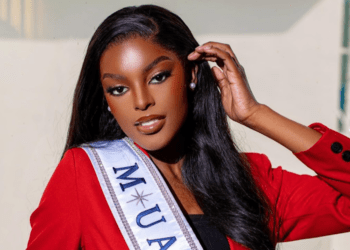Marriage has long been a cornerstone of personal fulfillment and societal stability.
However, for many artists, the institution of marriage presents unique challenges that hinder their creative pursuits and career trajectories.
Marriage demands often shift priorities, leading to a struggle between personal commitments and professional aspirations.
Artists find themselves dedicating time to their partners, family obligations, or household responsibilities, which detract from the hours needed for creative work.
This division of focus leads to reduced productivity and, ultimately, a stagnation of their artistic development.
Award-winning Indigenous rapper, Chibuzor Nelson Azubuike, popularly known as Phyno, has shared his opinion on celebrities getting married.
The ‘Do I’ crooner described music as a “jealous and tasking” career, emphasizing that juggling marriage or any other career with it is incredibly difficult.
According to him, most celebrities’ careers crash when they get married.
“Check everybody, statistically, I feel so [most celebrities’ careers crash when they get married]. Music basically is a jealous career. That’s why people drop out of school to face music. The ones that had to juggle the two, you have to give them kudos because it’s not easy.
“Sometimes, some people get to a certain fame level and rush back to school and come back to continue from where they stopped because you have to actually face one. Music is tasking; it takes all your time.”
Phyno
The emotional demands of maintaining a relationship, navigating conflicts, and supporting a partner leave little room for the introspection and solitude that many artists require for their work.
The need to be emotionally present for a spouse sometimes overshadows the need for self-exploration and creative expression.
In many cultures, traditional gender roles dictate that women take on the primary caregiving responsibilities within a marriage. The pressure to conform to these roles limits opportunities for professional development, networking, and creative collaboration, ultimately stifling artistic growth.
The stereotype of the “starving artist” often romanticizes the notion of artistic struggle, yet it also reinforces the idea that artists should prioritize their craft above all else, including relationships.
When artists do marry, they face societal scrutiny regarding their commitment to their art versus their commitment to their partner.
Influence of Partnership

The impact of marriage on an artist’s career varies significantly depending on the nature of the partnership. A supportive spouse provides encouragement, financial stability, and emotional backing, enabling an artist to thrive.
Conversely, a partner who is unsupportive or dismissive of an artist’s work creates a toxic environment that stifles creativity and ambition. The dynamics of the relationship either propel an artist forward or hold them back.
On the flip side, marriage also fosters collaboration and mutual inspiration. Many successful artists have found ways to integrate their personal and professional lives, creating work that reflects their shared experiences and perspectives.
In such cases, marriage serves as a source of creative synergy, enriching an artist’s output and providing new avenues for exploration.
For some artists, the fear of losing their identity in marriage is a significant concern. The idea that personal relationships dilute their artistic voice or lead to compromises in their work creates anxiety.
Phyno emphasized that juggling music with other commitments, including marriage, is incredibly difficult.
He noted that even those who manage to balance both deserve recognition.
“Another thing about music is that it is what you pass through that you put into it—life experiences—except if you use songwriters. But if you write your songs, you can’t be talking about happiness when you’ve got a girlfriend that’s stressing you.”
Phyno
Marriage often comes with societal expectations that pressure artists to conform to conventional paths, such as starting a family or pursuing stable jobs. These pressures lead artists to question their choices and result in a departure from their original creative pursuits.
While marriage poses challenges to an artist’s career, it is essential to recognize that the impact of this institution is not universally negative.
The relationship between marriage and artistic success is complex, shaped by individual circumstances, partnership dynamics, and societal influences.
Artists must navigate this landscape carefully, balancing their commitments with their professional aspirations.
READ ALSO: GSE Records GHS 640K Turnover Amid Declines in Volume and Value





















